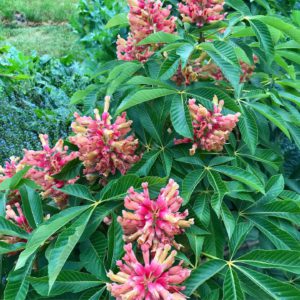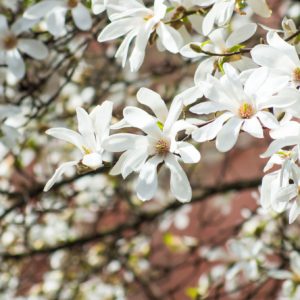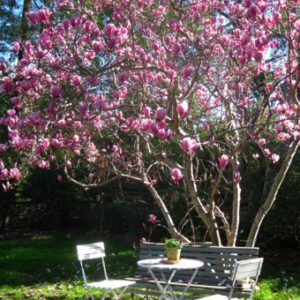Rhododendron ‘Pleasant White’
€22.00
Frequently Bought Together


Description
Quick Facts:
Common Name: Rhododendron ‘Pleasant White’
Botanical Name: Rhododendron ‘Pleasant White’
Position: Partial shade or dappled light; will tolerate some morning sun if soil is kept moist
Soil: Moist but well-drained, acidic (ericaceous) soil with plenty of organic matter; avoid chalky or very alkaline ground
Flowering Time: Late spring to early summer
Foliage: Evergreen
Hardiness: Fully hardy in the Irish climate once established
Eventual Height & Spread: Around 1–1.5m high and 1–1.5m wide over time
Growth Rate: Moderate; forms a dense, rounded shrub with a tidy habit
Common Name: Rhododendron ‘Pleasant White’
Botanical Name: Rhododendron ‘Pleasant White’
Position: Partial shade or dappled light; will tolerate some morning sun if soil is kept moist
Soil: Moist but well-drained, acidic (ericaceous) soil with plenty of organic matter; avoid chalky or very alkaline ground
Flowering Time: Late spring to early summer
Foliage: Evergreen
Hardiness: Fully hardy in the Irish climate once established
Eventual Height & Spread: Around 1–1.5m high and 1–1.5m wide over time
Growth Rate: Moderate; forms a dense, rounded shrub with a tidy habit
Why We Love It
We love ‘Pleasant White’ for the way it softens and lifts a planting scheme. The white blooms seem to catch every bit of available light, making it perfect for north- and east-facing spots where colour can sometimes feel flat. It’s wonderfully versatile – equally at home in a classic white garden, a woodland border or a contemporary scheme with greens and soft neutrals.
The evergreen foliage means it looks good all year, providing a rich, dark backdrop that makes spring bulbs, hostas and ferns really stand out.
Where to Use It
- As a focal shrub in a semi-shaded border
- In a white or pastel-toned planting scheme for a calm, cohesive look
- Under light tree cover, where the soil can be kept humus-rich and acidic
- In large ericaceous containers on a shaded terrace or by a front door
- As part of an evergreen structure planting to frame paths, steps or seating areas
Planting & Care
- Soil Preparation: Rhododendrons need acidic conditions. Work in generous amounts of ericaceous compost, leaf mould or pine needle mulch before planting. If your soil is neutral to alkaline, consider a raised bed or large container with ericaceous compost.
- Planting Depth: Plant at the same depth as in the nursery pot – rhododendrons dislike being planted too deeply.
- Watering: Keep the soil consistently moist, especially in the first couple of years and during dry spells. Use collected rainwater where possible in hard water areas.
- Feeding: Use an ericaceous fertiliser in early spring and again after flowering to support healthy growth and next year’s buds.
- Mulching: Mulch annually with leaf mould, bark or pine needles to help maintain acidity and conserve moisture.
- Pruning: Minimal pruning required. Deadhead spent flowers carefully after blooming and remove any dead or crossing branches in late winter if needed.
Good to Know
Rhododendron ‘Pleasant White’ is a lovely choice if you’re looking for something refined and reliable. Once it’s settled into the right soil, it’s largely low-maintenance. If you notice yellowing leaves or poor flowering, it can be a sign that the soil is too alkaline or that feeding is needed.
Caragh Garden Notebook – Jo’s Tips
- Pair ‘Pleasant White’ with soft pink or pale lilac rhododendrons and azaleas for a layered, romantic look.
- Underplant with snowdrops, hellebores and early narcissus so there’s interest before the main rhododendron show.
- Use it near paths, terraces or windows where you can enjoy the flowers up close – the white blooms really glow in the evening light.
- In smaller spaces, one or two well-placed white rhododendrons can bring a sense of calm and cohesion to the whole garden.





